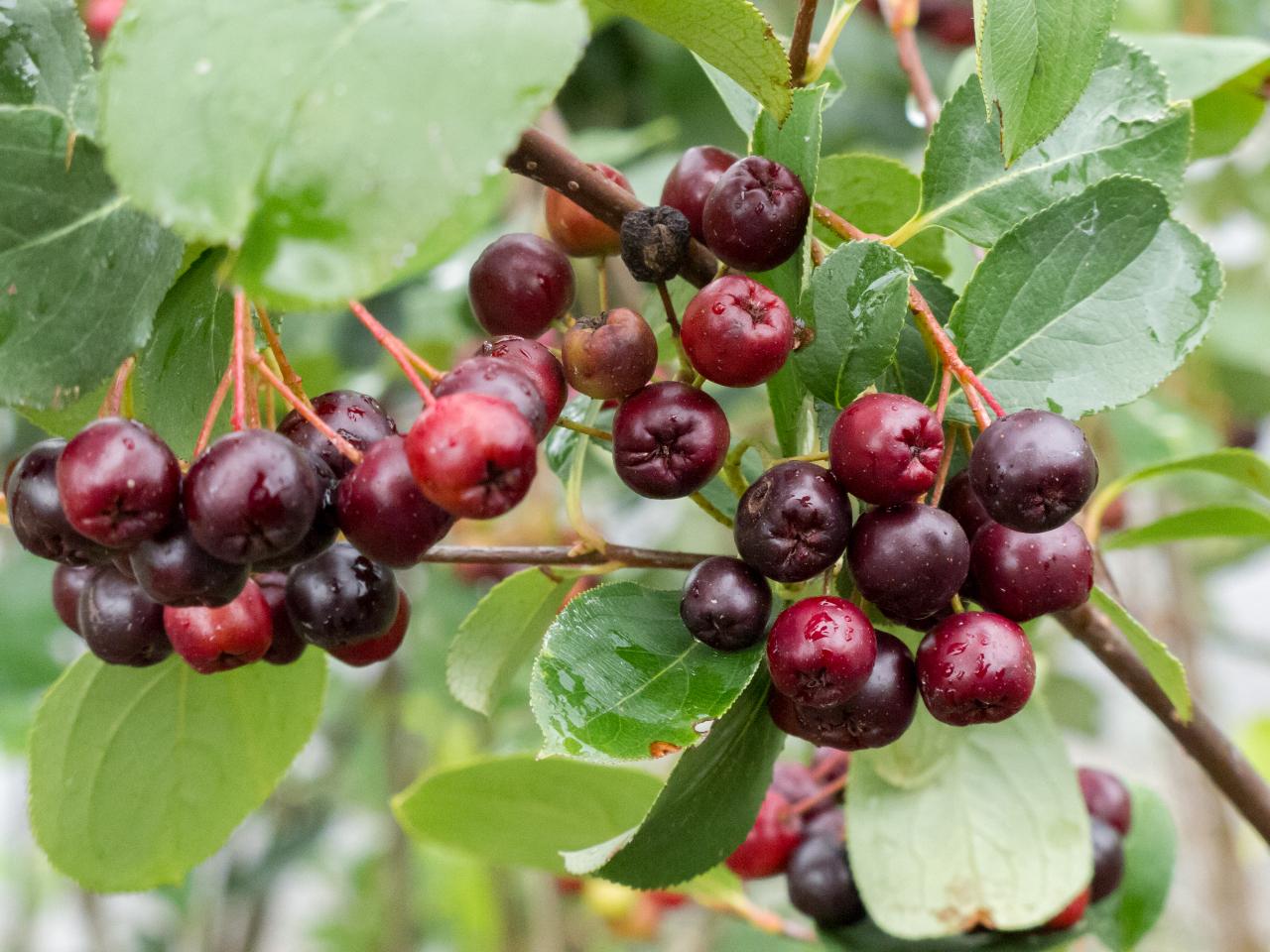About black chokeberry
Aronia melanocarpa
(Formerly Photinia melanocarpa)
Deciduous shrub
Rose Family
Maryland Distribution: native throughout the state of Maryland
Height: 3 to 6 feet tall
Flowers: white or pink-tinged; blooms April-May
Fall color: crimson-red-burgundy
Sun: full sun to partial shade
Soil: any soil type, wet to dry; pH 5.0-8.0
Garden Uses: Black chokeberry is native to eastern North America including all of Maryland. Its natural habitat ranges from bogs and swamps to dunes to rocky outcroppings. It is very adaptable to a variety of garden conditions ranging from wet to periodically dry soils in full sun to partial shade.

Clusters of white to pink-tinged flowers are similar in appearance to those of the related red chokeberry and bloom in April-May. The blooms are followed by fruits that turn from red to blackish-purple. These tart fruits are edible and are the subject of University of Maryland research for their potential use as an alternative fruit crop. Aronia does not require fertilization for fruit production and the best fruiting will occur on plants located in full sun.

In autumn, the foliage of black chokeberry turns to brilliant shades of red and burgundy. Over time, this multi-stemmed deciduous shrub tends to sucker profusely (forms new shoots from the base) and may produce a thicket of growth when free from competition of other plants.

Several dwarf cultivars are available for small-space gardens:
- ‘Ground Hug’ - 8 to 14 inches tall
- ‘Low Scape Mound’ - 12 inches to 2 feet tall
- ‘Morton’ (Iroquois Beauty™) - 2 to 3 feet tall
Use this for a mass planting, hedge, rain garden, pond edge, woodland garden, or pollinator garden.
Wildlife: Nectar and pollen supports native bees (Adrenid family and mason bees in particular). This is a host plant for Coral Hairstreak butterflies and the Large Lace-border Moth. Some songbirds and small mammals feed on the berries.
References
Aronia melanocarpa, North Carolina Extension Gardener Plant Toolbox, https://plants.ces.ncsu.edu/plants/aronia-melanocarpa/
Dirr, Michael. 1998. Manual of Woody Landscape Plants: Their Identification, Ornamental Characteristics, Culture, Propagation and Uses, Fifth Edition.
Dove, Tony and Ginger Woolridge. 2018. Essential Native Trees and Shrubs for the Eastern United States: The Guide to Creating a Sustainable Landscape, Charlesbridge, Watertown, MA.
